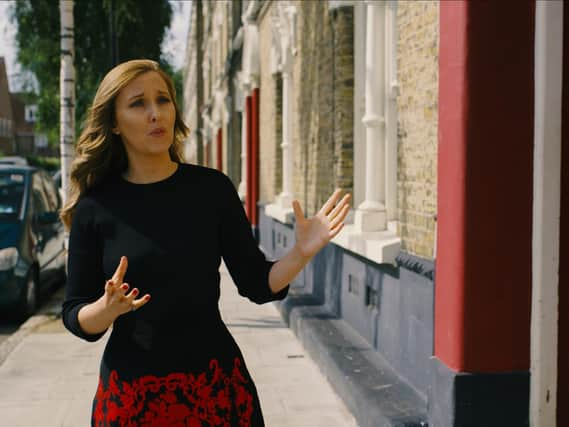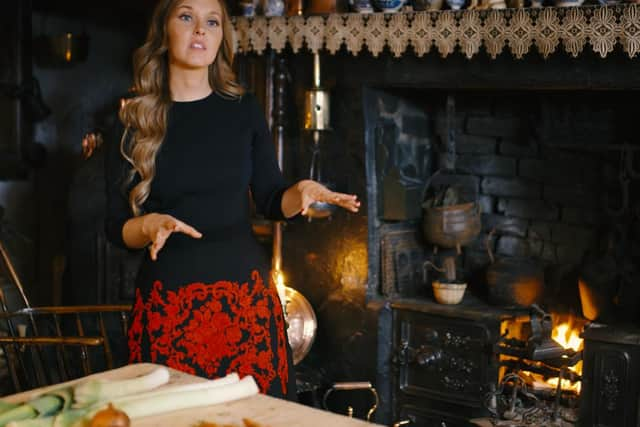How history has shaped the evolution of the modern house - and what makes it a home


She’s positioned in one of the ten unique rooms at Denis Severs’ House in London. The historical reinterpretation museum captures what life - and the home - would have been like for a family of Huguenot silk-weavers, from 1724 right through to the dawn of the 20th century.
It’s a fitting backdrop as Wells considers how homes have changed over time, one of a number of craftspeople, designers, architects and historians interviewed for new three-part series The History of Home.
Advertisement
Hide AdAdvertisement
Hide Ad“The history of home is the history of humankind,” says Wells, ahead of the show’s launch. “It’s deeply intertwined with who we are, where we are, how we are and why we do things.


“Homes are not just places of shelter, they’re a symbol of status, they’re landmarks, community places, workspaces. And we haven’t got to where we are by chance. Everything from lighting to electricity to the birth of the kitchen even - because we once had kitchens that were outside - has happened in order to allow us the home that we have today.”
The show, narrated by American actor Nick Offerman of Parks and Recreation fame, examines how the fundamental elements of daily life, such as the need for shelter, comfort, and sustenance, have transformed lives and homes.
Viewers are taken on a journey across the globe to see some of the world’s most spectacular properties, from Highclere Castle, the main setting of period drama Downton Abbey, to Kirkjubøargarður, also known as King’s Farm, in the Faroe Islands, one of the oldest inhabited wooden houses in the world.
Advertisement
Hide AdAdvertisement
Hide AdThe programme explores the histories and mysteries behind every room in the house, looking at how homes have developed from the treetop nests of our two million-year-old ancestors to the design of 3D printed houses on Mars.
“Houses were very communal, the way we lived was much more communal than how we live today,” explains Wells, a Lecturer in Ecclesiastical and Architectural History at the University of York. “It’s much more segmented today.
“One would live in a huge open hall house, a huge open space where you’re all huddled around not only warmth but the light. Everything came from the fireplace - that was how you ate, that was how you had warmth and that was how you could see.
“Then as the medieval era goes on, we start to see development of the bedroom and we start to see the birth of the kitchen. Moving into the early modern and Tudor period, it was Henry VII who created the first time that we see separate rooms.
Advertisement
Hide AdAdvertisement
Hide Ad"It was as late as the 15th century that we actually see rooms specifically designed for different purposes. That has gone on and we’ve refined that through architecture, through invention and through need as well.
“England has some great examples of going from this real communal living space to now having rooms for particular functions - a bathroom or a dining space for example. Now what’s interesting though is we’re going back to what it was somewhat and we’re having these open living spaces which are a hybrid of kitchen-dining-living room, for example.”
For many people, the coronavirus pandemic has meant a merging of work and home space, at least for the time being, and rooms have been adapted to create makeshift offices and studies.
But the idea of working and living in the same area is not a new one - and viewers learn more when Wells pays a visit to the Pullen estate in London, some of the country’s last surviving Victorian tenement buildings.
Advertisement
Hide AdAdvertisement
Hide AdBuilt in 1886 by James Pullen, they were designed for crafts and tradespeople, from shoemakers to stationers, and featured both living and workshop space. “They were built in the 1880s by a local builder and purpose built for crafts people,” explains Wells, who used to run a heritage consultancy specialising in homes history and historic buildings. “They are essentially the first particularly designed home-work space in one.”
Brick was a popular building material of that time period, as it still is today. The invention of the Hoffman kiln in the mid-19th century meant bricks could be mass produced for the first time, rather than being made by hand.
“Brick is an extremely important material,” Wells says. “The invention of things such as the Hoffman kiln meant that bricks could be produced consistently and at scale. Particularly in England with the terrible weather we have, we needed these brick buildings.
"Previously to that, it was timber framing and stone, which was extremely expensive. The production of brick meant we could have houses built very quickly and much more cheaply, which created another huge commercial industry as well.”
Advertisement
Hide AdAdvertisement
Hide AdThe creation of new light sources was also an important development for the evolution of housing. Progressing from open fires to rushlight candles and onto gas and electric lighting enabled society to create ways of living that we’re all familiar with today.
“You just have to look at the difference between a candle and an electric light bulb and how much you can do between one and the other,” Wells elaborates. “Although the quality of lighting remained unchanged for a couple of thousand years, when we started to get gas lighting and electric lighting, that’s when we really start to see the birth of the modern home.
“We’re able to do things - it’s when we start to have family time, when we start to be able to have separate rooms for different things, for going off and working or doing different activities that you really couldn’t do before - you had to be huddled around in one place (around the fire or light source).”
Wells has numerous TV and radio appearances to her name, but says this series was one of the most enjoyable she’s filmed. “It’s a great series. It’s one of a kind... You get to see every aspect of the house, every type of house or home you can truly think of.”
Advertisement
Hide AdAdvertisement
Hide AdAnd it’s not just stories of different houses. “It’s how rooms as well as grander houses are set pieces to our lives. They are backdrops to our lives. Fundamental elements of our day to day living have shaped them through the need for things like shelter, comfort, sustenance, fashion...Our homes reflect who we are, our needs, our values, our relationships, our economic status, our career aspirations.”
The show has wide appeal, Wells claims - to those interested not only in architecture but also in societal history and the way we have lived. “And also those who just want to see some absolutely fantastic properties because there are so many great ones featured.”
The History of Home premieres exclusively on CuriosityStream, beginning June 18.
For more stories from the YP Magazine and The Yorkshire Post features team, visit our Facebook page.
Advertisement
Hide AdAdvertisement
Hide AdEditor’s note: first and foremost - and rarely have I written down these words with more sincerity - I hope this finds you well.
Almost certainly you are here because you value the quality and the integrity of the journalism produced by The Yorkshire Post’s journalists - almost all of which live alongside you in Yorkshire, spending the wages they earn with Yorkshire businesses - who last year took this title to the industry watchdog’s Most Trusted Newspaper in Britain accolade.
And that is why I must make an urgent request of you: as advertising revenue declines, your support becomes evermore crucial to the maintenance of the journalistic standards expected of The Yorkshire Post. If you can, safely, please buy a paper or take up a subscription. We want to continue to make you proud of Yorkshire’s National Newspaper but we are going to need your help.
Postal subscription copies can be ordered by calling 0330 4030066 or by emailing [email protected]. Vouchers, to be exchanged at retail sales outlets - our newsagents need you, too - can be subscribed to by contacting subscriptions on 0330 1235950 or by visiting www.localsubsplus.co.uk where you should select The Yorkshire Post from the list of titles available.
Advertisement
Hide AdAdvertisement
Hide AdIf you want to help right now, download our tablet app from the App / Play Stores. Every contribution you make helps to provide this county with the best regional journalism in the country.
Sincerely. Thank you.
James Mitchinson
Editor